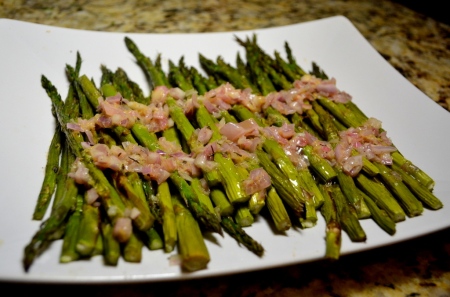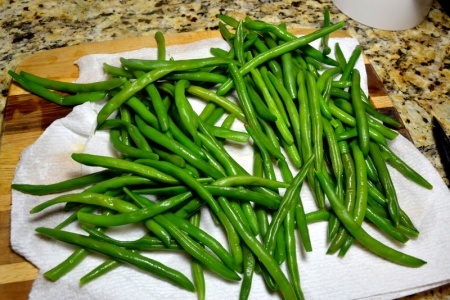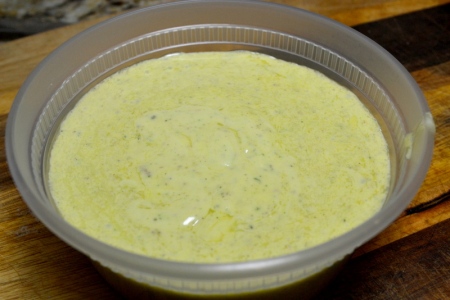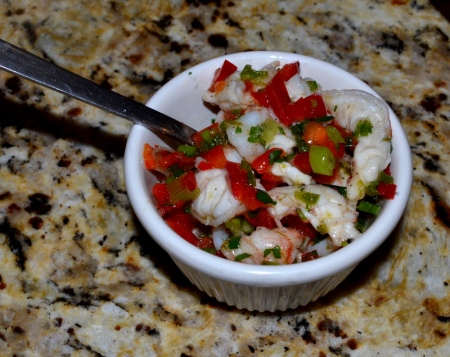I first made this soup last October, but came across a few technical issues which I have corrected when I made this soup again over the weekend. In fact, I loved it so much that I made a second batch the next day. The soup is very flavorful, and uses baby spinach to amplify the broccoli flavor (and color). The recipe uses sharp cheeses (sharp cheddar and parmesan) to attain great cheesy flavor, but without so much cheese as to make the soup feel heavy or fat laden. I splurged a little and bought a sharp English cheddar, but since it only added a few dollars because the recipe just needs 3-ounces. Overall the recipe is delicious; 4-1/2 stars.
I was hoping to stretch the soup throughout the week (for lunches), and was a little surprised that the recipe only yields 4 bowls of soup. So I made a second batch yesterday, still having enough baby spinach and sharp English cheddar to make the second batch. I only need to buy another 2-1/2 pounds of broccoli.
- The recipe calls for peeling the stalks; which was laborious when I first made this recipe in October. This time I only spend a few minutes peeling the stalks before breaking into 1-inch pieces. It saved nearly 30 minutes.
- The original recipe calls for something between 3 to 4 cups of water (in addition to the 2 cups of chicken broth); adjusting the amount of water in the final step according to your desired consistency. I would suggest adding at least 1 cup; and if you are planning to reheat, to add 1-1/2 cups of water.
- Because the soup was so thick, there was a lot of soup left in the blender after Step 5. To recover some of the lost soup, I blender the final cup of water (added as part of Step 6); which rinsed out most of the leftover soup, before adding the water to the pot.
- I bought an extra 1/2 pound of broccoli, because some of the stalks were very long and I wanted to trim away the very thick and hard portion. Besides, it was only sale for only 99-cents/pound.
- I did not quite have enough dry mustard powder for the second batch, so I used the following substitution rule: 1 teaspoon dried mustard = 1 Tablespoon prepared mustard.
Rating: 4-1/2 stars.
Cost: $7.
How much work? Medium.
How big of a mess? Medium.
Start time 5:00 PM. Ready at 5:45 PM.
Chris Kimball’s original recipe is here. My descriptions of how I prepared it today are given below:
2 pounds broccoli (I used 1lb 10 oz florets, plus 6 ounces of stalks)
1 medium, roughly chopped onion (1 cup)
2 tablespoons unsalted butter
2 medium garlic cloves, pressed (2 teaspoons)
1-1/2 teaspoons dry mustard powder
pinch cayenne pepper
1 teaspoon table salt
3–4 cups water
1/4 teaspoon baking soda
2 cups chicken broth
2-oz baby spinach (2 cups)
3-oz sharp cheddar cheese, shredded (3/4 cup)
1-1/2 oz Parmesan cheese, grated fine (about 3/4 cup)
1/2 teaspoons ground black pepper
- Prepare broccoli by roughly chopped florets into 1-inch pieces, trim the stems, then peeled and cut into 1/4″-thick slices. Prepare onions by roughly chopped which should yield about 1 cup.
- Add butter to large Dutch oven set over medium-high burner. After the foaming subsides, add the prepared broccoli, onion. Press the garlic cloves directly into the pot. Add 1-1/2 teaspoons dry mustard powder, a pinch of cayenne pepper, and 1 teaspoon table salt.
- Cook for 6 minutes, stir frequently. After the pot becomes fragrant, add 1 cup water and 1/4 teaspoon baking soda. Bring water up to a simmer, cover, and reduce burner to maintain a simmer, and continue cooking for 20 more minutes until broccoli becomes very soft, stir once half way through cooking.
- Add 2 cups chicken broth and 2 cups water. Turn up burner to medium-high. Once pot is at a simmer, stir in baby spinach and wilt for 1 minute. Remove pot from burner.
- Put half of soup in blender, add shredded cheddar and grated Parmesan, and process for 1 minute until smooth.Empty into a medium-sized bowl and repeat this step with the remaining soup.
- Empty bowl of soup back into the Dutch oven, set over medium burner until begins to simmer. Add up to 1 cup of water until you attain the desired consistency (if you have a lot of leftover soup in blender; rinse blender first with the 1 cup of water, before adding it back to the pot). Adjust seasoning with salt and 1/2 teaspoon pepper according to taste. Serve, with extra Parmesan passed separately.
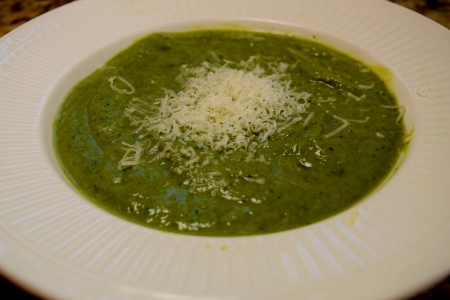






 Posted by My Year With Chris Kimball
Posted by My Year With Chris Kimball 